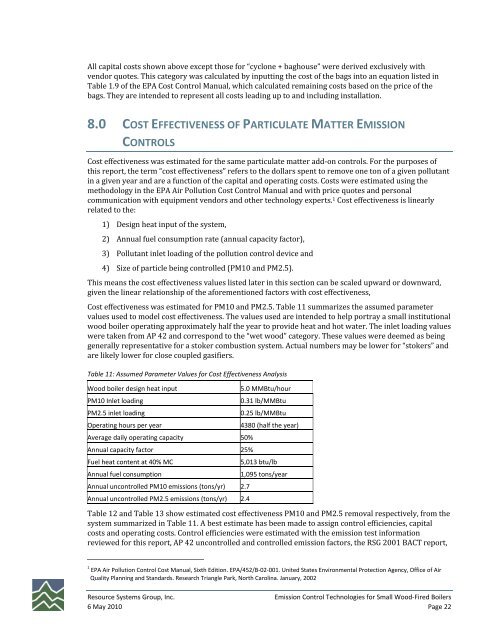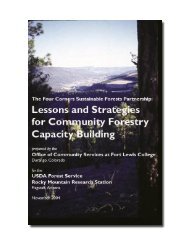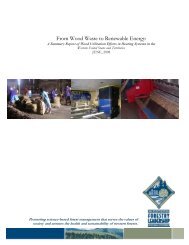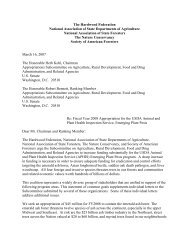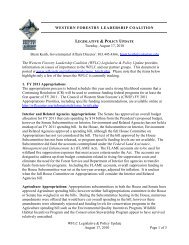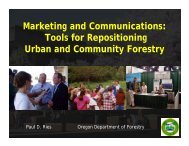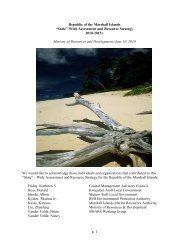Emission Controls for Small Wood-Fired Boilers - Western Forestry ...
Emission Controls for Small Wood-Fired Boilers - Western Forestry ...
Emission Controls for Small Wood-Fired Boilers - Western Forestry ...
Create successful ePaper yourself
Turn your PDF publications into a flip-book with our unique Google optimized e-Paper software.
All capital costs shown above except those <strong>for</strong> “cyclone + baghouse” were derived exclusively with<br />
vendor quotes. This category was calculated by inputting the cost of the bags into an equation listed in<br />
Table 1.9 of the EPA Cost Control Manual, which calculated remaining costs based on the price of the<br />
bags. They are intended to represent all costs leading up to and including installation.<br />
8.0 COST EFFECTIVENESS OF PARTICULATE MATTER EMISSION<br />
CONTROLS<br />
Cost effectiveness was estimated <strong>for</strong> the same particulate matter add‐on controls. For the purposes of<br />
this report, the term “cost effectiveness” refers to the dollars spent to remove one ton of a given pollutant<br />
in a given year and are a function of the capital and operating costs. Costs were estimated using the<br />
methodology in the EPA Air Pollution Cost Control Manual and with price quotes and personal<br />
communication with equipment vendors and other technology experts. 1 Cost effectiveness is linearly<br />
related to the:<br />
1) Design heat input of the system,<br />
2) Annual fuel consumption rate (annual capacity factor),<br />
3) Pollutant inlet loading of the pollution control device and<br />
4) Size of particle being controlled (PM10 and PM2.5).<br />
This means the cost effectiveness values listed later in this section can be scaled upward or downward,<br />
given the linear relationship of the a<strong>for</strong>ementioned factors with cost effectiveness,<br />
Cost effectiveness was estimated <strong>for</strong> PM10 and PM2.5. Table 11 summarizes the assumed parameter<br />
values used to model cost effectiveness. The values used are intended to help portray a small institutional<br />
wood boiler operating approximately half the year to provide heat and hot water. The inlet loading values<br />
were taken from AP 42 and correspond to the “wet wood” category. These values were deemed as being<br />
generally representative <strong>for</strong> a stoker combustion system. Actual numbers may be lower <strong>for</strong> “stokers” and<br />
are likely lower <strong>for</strong> close coupled gasifiers.<br />
Table 11: Assumed Parameter Values <strong>for</strong> Cost Effectiveness Analysis<br />
<strong>Wood</strong> boiler design heat input<br />
PM10 Inlet loading<br />
PM2.5 inlet loading<br />
Operating hours per year<br />
Average daily operating capacity 50%<br />
Annual capacity factor 25%<br />
Fuel heat content at 40% MC<br />
Annual fuel consumption<br />
Annual uncontrolled PM10 emissions (tons/yr) 2.7<br />
Annual uncontrolled PM2.5 emissions (tons/yr) 2.4<br />
5.0 MMBtu/hour<br />
0.31 lb/MMBtu<br />
0.25 lb/MMBtu<br />
4380 (half the year)<br />
5,013 btu/lb<br />
1,095 tons/year<br />
Table 12 and Table 13 show estimated cost effectiveness PM10 and PM2.5 removal respectively, from the<br />
system summarized in Table 11. A best estimate has been made to assign control efficiencies, capital<br />
costs and operating costs. Control efficiencies were estimated with the emission test in<strong>for</strong>mation<br />
reviewed <strong>for</strong> this report, AP 42 uncontrolled and controlled emission factors, the RSG 2001 BACT report,<br />
1<br />
EPA Air Pollution Control Cost Manual, Sixth Edition. EPA/452/B‐02‐001. United States Environmental Protection Agency, Office of Air<br />
Quality Planning and Standards. Research Triangle Park, North Carolina. January, 2002<br />
Resource Systems Group, Inc.<br />
<strong>Emission</strong> Control Technologies <strong>for</strong> <strong>Small</strong> <strong>Wood</strong>‐<strong>Fired</strong> <strong>Boilers</strong><br />
6 May 2010 Page 22


